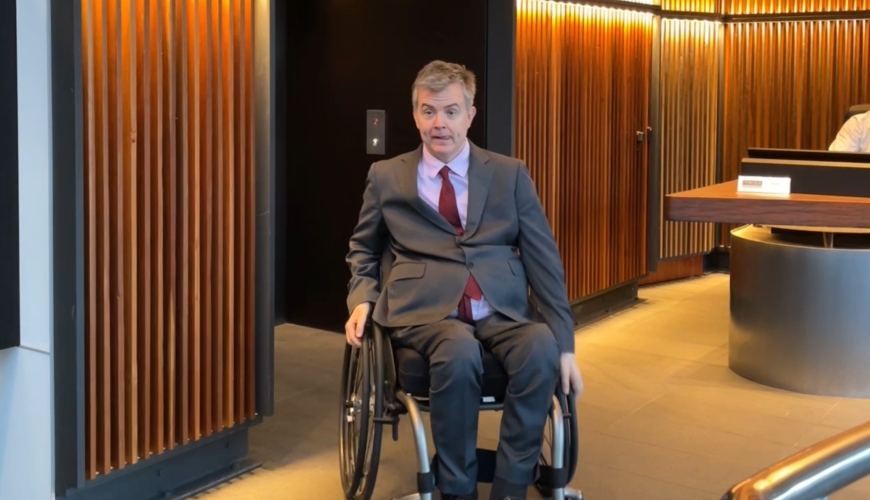Frequently Asked Questions

This page contains frequently asked questions about employment for people with disability.
If you have a question about employment for people with disability that isn't answered here,
feel free to get in touch with IncludeAbility by emailing includeability@humanrights.gov.au.
1. What are some ways to prevent a claim for disability discrimination in the workplace?
A claim for direct or indirect disability discrimination does not rely upon the motive or the intent of the alleged discriminator. That is, the alleged discriminator can be acting in good faith but still be found to have undertaken disability discrimination.
Therefore when organisations want to make sure that they are not discriminating against people with disability, they need to be mindful of how they train their employees, the behaviour of leadership in setting a culture for their employees, and above all, communicating well with all employees.
For more information visit Resources for employers

What are some ways to prevent a claim for disability discrimination in the workplace?
2. What is the difference between direct and indirect Disability Discrimination?
Direct disability discrimination occurs when somebody is treated unfavourably because of their disability.
Indirect disability discrimination occurs when a requirement or rule that appears the same for everyone disadvantages someone because of their disability.
The IncludeAbility guide Your rights as an employee under the Disability Discrimination Act has information about what you can do if you experience discrimination in the workplace, and where to seek further information.

What is the difference between direct and indirect Disability Discrimination?
3. What types of disabilities are covered by the Disability Discrimination Act?
The Disability Discrimination Act uses a broad definition of disability.
It includes physical, intellectual, psychiatric, sensory, neurological and learning disabilities. It also includes physical disfigurement and the presence in the body of disease-causing organisms, such as the HIV virus, and episodic, temporary, permanent, visible and invisible disability.
The Act also covers people who may be discriminated against because they are accompanied by an assistant, for example a support worker, or by a trained assistance animal, or they use a disability aid.
The IncludeAbility guide Your rights as an employee under the Disability Discrimination Act has information about the Disability Discrimination Act, how it applies in the workplace, what you can do if you experience discrimination in the workplace, and where to seek further information.

Disabilities covered by the Disability Discrimination Act
4. How can employers create an accessible and inclusive workplace for people with disability?
When creating an accessible and inclusive workplace for people with disability, employers should consider:
- the physical workplace
- workplace attitudes
- workplace technology
- reasonable adjustments
The IncludeAbility guide Creating an accessible and inclusive workplace provides information for employers on the points above, as well as the concepts of accessibility and universal design, and relevant resources and case studies.

Creating an accessible and inclusive workplace for people with disability
5. Should you identify as a person with disability to your potential or actual employer?
The decision to identify as a person with disability in the workplace is not an easy one. The nature of disability is deeply personal and people with disability are diverse. In most circumstances, you do not have an obligation to share information about your disability with your employer or potential employer. Information about your disability is private and the decision to tell others is up to you.
However, if you are applying for a job and your disability means that you are unable to carry out the inherent requirements of the job without reasonable adjustments being made to accommodate your disability, then you should tell the employer.
The IncludeAbility guide Identifying as a person with disability in the workplace provides information about the Disability Discrimination Act, reasons you may or may not want to share information about your disability, reasonable adjustments, tips, resources, and case studies. The guide also has a reflection from IncludeAbility Ambassador Tracey Corbin-Matchett about disclosing an invisible disability.

Identifying as a person with disability to potential or actual employers
6. What does an effective reasonable adjustment policy look like?
An effective reasonable adjustment or reasonable accommodation policy is one that is supported by the highest levels of leadership and one that takes a long term focus on the inclusion of people with disability in all aspects of recruitment, retention and career advancement. An effective reasonable adjustment policy is informed by, and ideally designed by people with disability in your organisation, or by your disability employee network.
The following questions have been developed to assist employers assess their approach to reasonable adjustments:
- Does your organisation have a reasonable adjustments policy and procedure?
- If so, are all managers aware of this policy and procedure and provided with training on how it is applied?
- Does your organisation have a resource available to both employees and managers about JobAccess and the Employment Assistance Fund (EAF)?
The most common form of reasonable adjustment is flexible work conditions.
For more information visit Resources for employers

An effective reasonable adjustment policy
7. What is a critical issue for Australian businesses to consider to improve the rate of employment of people with disability?
One of the critical issues to improve the rate of employment of people with disability is the need for leaders of our largest businesses to see the employment of people with disability as a mainstream issue. Less than 20% of Australia's top 50 companies listed on the Australian Securities Exchange have a Disability Action Plan.
Many organisations report on the Sustainable Development Goals and Human Rights Issues yet do not have a Disability Action Plan. People with disability are a critical issue under both the Sustainable Development Goals and in consideration of human rights.
Employment of people with disability is not only fundamental to creating an inclusive nation, it also makes incredibly good business sense.
For more information visit Resources for employers


